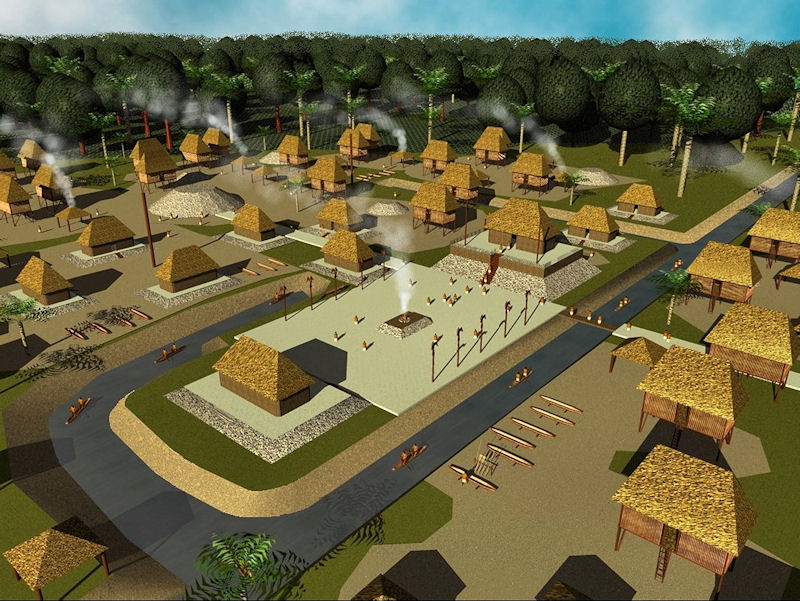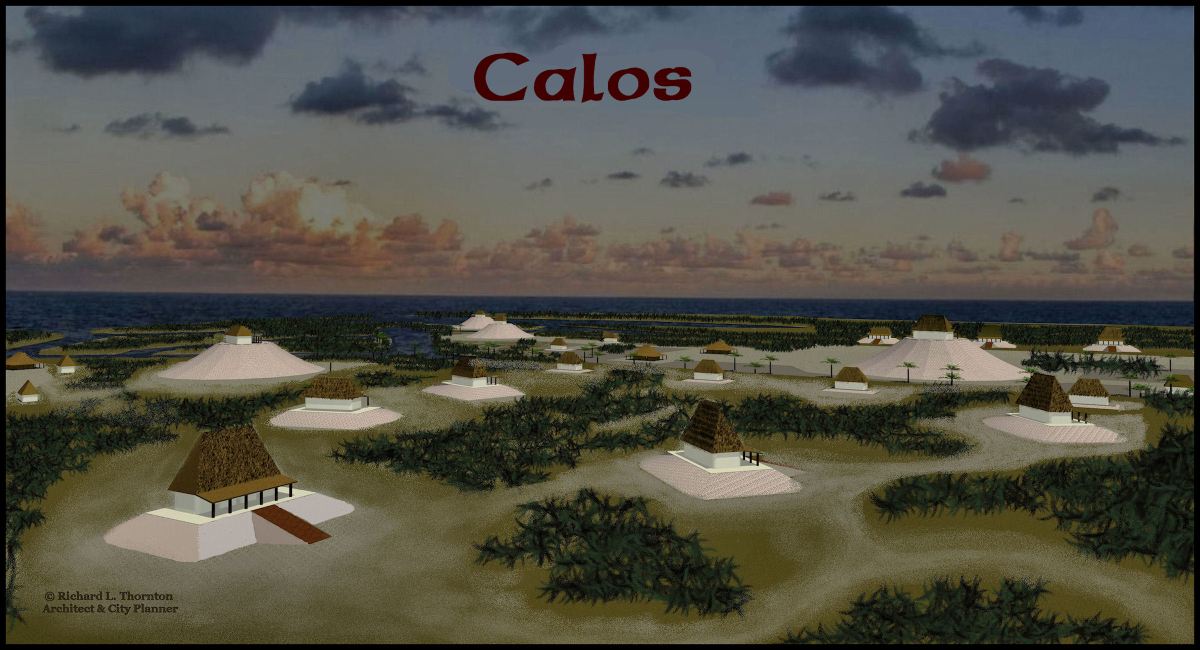Hurricane Ian struck the ruins of the former capital of the Calusa Kingdom (0 AD-1700 AD) on Mound Key, Florida with 155 mph winds and a 16 feet tidal surge, prior to devastating modern towns nearby, such as Fort Myers. Those pyramids and platforms, built of sea shells, are still standing!
by Richard L. Thornton, Architect and City Planner

By the way, I am still very much in the business of producing world-class virtual reality computer models of historic and prehistoric structures . . . even if they no longer exist. In fact, that is exactly how I got started in this specialty. The American Museum of Natural History wanted me to re-create the actual appearance of Mission Santa Catalina de Guale on St. Catherines Island, GA as it looked in the early 1600s.



The least likely location on the entire Eastern Seaboard of the USA to receive a direct hit by a hurricane is the mouth of the Altamaha River near Darien, GA. It was also one of the few locations of the Atlantic Coast, where Indian Corn grew well. Thus, the Georgia Coast had a very high indigenous population density, but its towns did not build the tall shell pyramids like one sees in Florida or southern Alabama. There are many ancient shell rings on the Georgia Coast. These provided protection from tidal surges, which extended out from hurricanes bypassing the Georgia Coast.








Hi Richard, I am intrigued as to which is the best of these dwellings. I quite like the Coastal fishing camp on Cumberland Island even though there are more modern looking buildings.
LikeLiked by 1 person
These huts were woven like baskets then tied together on the camp site. Since the material was so light, sections of the huts were carried on their backs or in canoes from the villages farther inland.
LikeLiked by 2 people
I wonder how Seminole in places like Big Cypress handled Ian. Houses on stilts look flimsy but can be pretty rugged. Atole dwellers in the south Pacific still use them. The shell mounds are not, as some still claim, an accident. They were built for a reason, and that was hurricanes.
LikeLiked by 1 person
My understanding is that the traditional Seminole houses may lose their thatching in a severe hurricane, but the timber structural frame remains intact. However, I would not want to be in a chiki during a 100 mph wind. LOL
LikeLiked by 2 people
Our middle daughter had an assignment for Social Studies this past week. We worked on it a few days. She had to choose a tribe from North America. As a proud Caribbean I asked her to choose a South East tribe. We chose the Calusas. As they traded and had contact with the Tainos from Cuba and eventually the remaining 80 families fled to Cuba. The ones that stayed here joined the Seminoles. Their water canals were impressive and also the fact that there were many similarities between the Calusas and the Tainos. The Calusas made masks and the Taino also made masks that are called guaisas. In many of the articles I read about them it mentions “ Casike” for the chief and that term was also used by the Taino for chief. What left me astonished is that it is said they might have had a history with the Louisiana Tunica. The following is on an author that talks about it in his book.
The linguistic origins of Native American cultures and the connections between these cultures as traced through language in prehistory remain vexing questions for scholars across multiple disciplines and interests. Native American linguist Julian Granberry defines the Calusa language, formerly spoken in southwestern coastal Florida, and traces its connections to the Tunica language of northeast Louisiana.
LikeLiked by 2 people
I strongly suspect that the Tunica, Calusa and Tekesta (Tequista) in SE Florida around Miami were the same people as the Upper Creeks. We have the Upper Creek Migration Legend. They were extremely tall and originated in the same region as a people called the Tequesta by early Spanish explorers. They were a Toltec tribe and lived in the high mountains between SW Veracruz and Oaxaca states. The Mayami around Lake Okeechobee were definitely a Maya tribe. The word Maya is derived from their name. The other Maya tribes never called themselves Maya until the Spanish told that was their name. The Spanish pulled that same stunt on the Native peoples of Florida and the Georgia coast . . . renaming them to expedite Spanish administration of districts that might include several tribes.
LikeLiked by 2 people